Eurocom Monster 1.0: Clevo's Little Monster
by Vivek Gowri on May 18, 2012 4:55 AM EST- Posted in
- Laptops
- Clevo
- Eurocom
- Ivy Bridge
- Kepler
Everything But the Kitchen Sink?
While the internal hardware is basically second to none, I have mixed feelings about the Monster from a device hardware standpoint. Clevo has never been mistaken for a design powerhouse, and the Monster does nothing to change that. Like most other Clevo notebooks, the design is a bit staid. It’s inoffensive, but relatively boring. The word that comes to mind is generic. In stark contrast to the heavily design-centric ultrabooks coming out these days, it’s a bit jarring. Obviously, the form factor isn’t conducive to a sleek and beautiful design, but even so, there aren’t any distinguishing characteristics to the design in general.
The chassis is constructed primarily of plastic, with a rubberized soft-touch finish on the interior and lid. There’s a square patterning on the palmrest, touchpad, and lid, giving all the surfaces you touch a subtle texture that feels nice to the touch. It feels pretty solid, no creaks or anything of the sort, and the lid is pretty resistant to torsion. It’s a pretty chunky laptop, and it’s built to match. I wouldn’t necessarily say it’s rugged or tough in the same way as a ThinkPad, but this is a notebook that can take some abuse, something you can toss around without being afraid of scratching or denting.
From a form factor standpoint, the Monster is pretty interestingly situated. It has a smaller footprint than the M11x (the W110ER comes in at a quarter of an inch wider but almost an inch less deep), though a little bit thicker. The LCD bezel is thankfully not nearly as large or as distracting as the one on the M11x, but a major complaint we had with the smallest Alienware was that it had a chassis large enough to accommodate a bigger screen; that holds true for the W110ER as well. While a 13.3” screen would have required too many dimensional changes to fit (unlike the M11x, which already had the depth to fit a 13” screen), a 12.5” screen could easily fit within a slightly widened chassis (see the 12.5” Samsung Series 3 or ThinkPad X220 at 11.75” and 12.0” wide, respectively). The 1.8kg/3.95lb weight is roughly where one would expect, heavier than Sony’s 13” SA-series but a half pound lighter than the outgoing M11x R3. Considering the computing prowess on tap here, the weight and thickness are small sacrifices to make. Still, it would be nice if the next person to make a notebook in this vein would drop the pretense of a gaming 11.6” ‘ultraportable’ and spec a screen that fit the chassis better.
The thickness actually makes a surprising difference. There’s a steep taper near the front of the notebook that allows Eurocom to quote 0.51” at thinnest point, but it’s basically 1.25-1.5” thick through most of the body. Hilariously, it’s more than twice as thick as the ASUS Zenbook UX21. Compared to ultrabooks and even newer non-ultrabook thin and lights, this feels like a notebook from a different era. Specifically, it reminds me a lot of the 12-13” notebooks from around five years ago—Dell’s XPS M1210, the ASUS W5F and W7J/W7S (a notebook that I have a lot of affection for), even the Lenovo V100 and MSI S262. Note that all of these systems came out with Core Duo processors (and were later upgraded to Merom), so we’re talking the early-mid 2006 timeframe. Alienware had a similarly chunky system in the M11x, but it had styling and details that made it look and feel like a modern system, and the design language made it instantly recognizable as an Alienware. The Monster simply lacks that distinctive characteristic.
OriginPC offers a custom lid design with their W110ER (called the EON11-S), a sleek looking part that’s actually very reminiscent of the M11x lid. They offer it in matte black, matte red, or glossy metallic silver, and based on the pictures, it seems like a nice improvement over the stock lid. However, it’s worth noting that the EON11-S is more expensive than Eurocom’s Monster and doesn’t offer the upgraded screen as an option either (at least not at the time of writing).
Looking around the Monster, we see a healthy allocation of ports—Gigabit LAN, VGA, HDMI, headphone/mic, and two USB 3.0 ports on the left side, along with a USB 2.0 and the AC port on the right. The left side also has a large vent, while the back is dominated by the removable 62Wh battery. The front has notification LEDs for power, battery, and disk usage but is otherwise clean. The Synaptics touchpad works as expected and features multitouch gestures and scrolling—two finger scroll works well, and the presence of physical mouse buttons is a relief.
The most offensive part of the design is actually the keyboard, which has slightly shrunken keys and a layout designed to confuse and frustrate. The entire right-hand side feels truncated, with the forward slash and right shift keys narrower than normal and the arrow keys also narrow (but still full height). For reasons I cannot fathom, there is a second Fn key on the right hand side, located just above the right arrow key. Page up/down and home/end both exist only in the land of Fn keys, and the Esc key is also oddly small. Safe to say, I’m not a fan. The downsized keys don’t bother me much at all, though I suspect that a larger guy like Jarred would probably curse the keyboard anytime he had to use it. On the bright side, the keypresses are positive, with a decent amount of travel in the z-direction, and there's a pleasing lack of flex in the keyboard overall. Once you get used to the layout of the secondary keys, it's a decent keyboard.


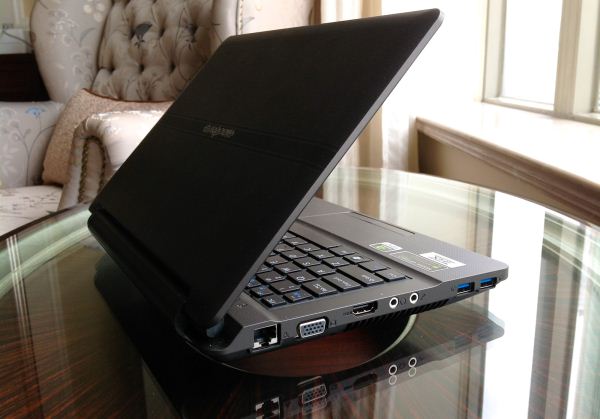






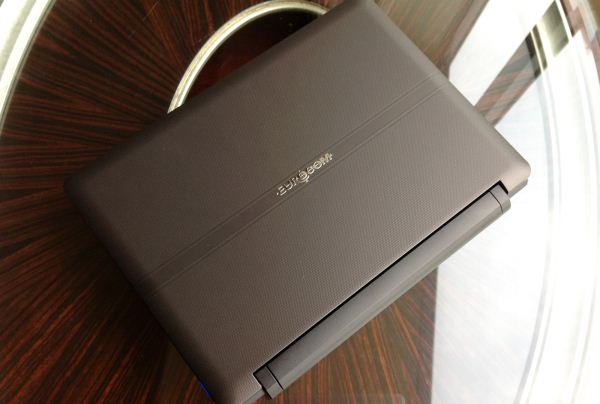
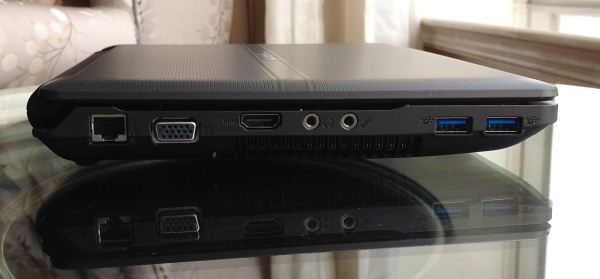
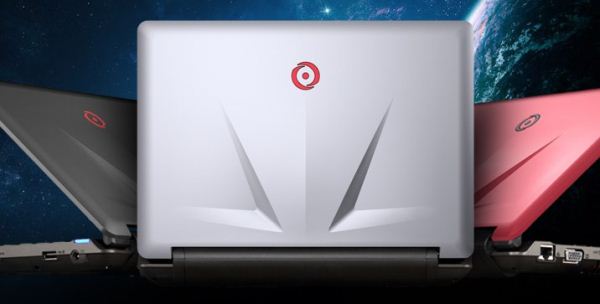
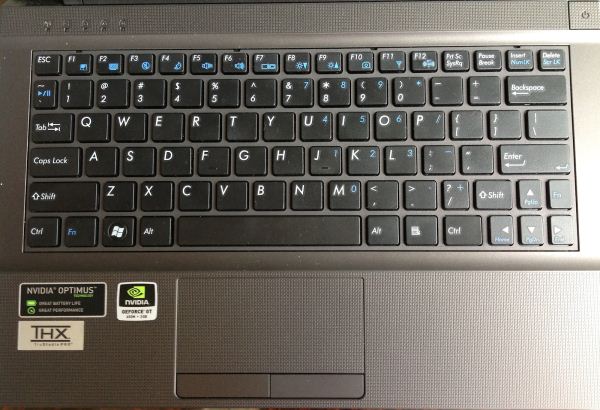








47 Comments
View All Comments
fic2 - Friday, May 18, 2012 - link
Cue the lawsuit from Monster Cable in 3, 2, 1...hsew - Friday, May 18, 2012 - link
This needs an mSata port and a higher resolution display option and it would be worth buying. Thunderbolt would be nice but not critically necessary. Guess that's why they called it the 1.0.Beenthere - Friday, May 18, 2012 - link
...and a 45w CPU for a 11.6" laptop sure don't make good sense.RoninX - Friday, May 18, 2012 - link
It would be interesting to see a comparison, in terms of design and hardware options, of all the different OEM varieties of this Clevo (Eurocom, Origin, Maingear, etc.). Of course, the performance will be similar, if not identical, but the look and feel, and the choices in terms of screens and SSDs, may be different...Also, is there any way to get a 9-cell battery for this?
slim142 - Friday, May 18, 2012 - link
This laptop in 14" with Matte screen, 1680x1050 (or, if too much, then 1440x900) resolution. I would jump on it immediately.maniac5999 - Friday, May 18, 2012 - link
Actually, I have a 12" laptop (MSi Wind 230) and I think that 768p is the right resolution for this size.yhselp - Saturday, May 19, 2012 - link
It really boggles my mind when competent people, even professionals, make subjective claims about products. Did they get caught up in marketing to such an extent that they're no longer able to see a product for what it really is? When was the m11x anything but a shameless, uninnovative shirking of an already dated chassis? A thick notebook which weighs as much as a regular 13.3-incher, yet has a tiny screen and unimpressive components. I'm not saying it's a bad product per se, just an unimaginative one that doesn't push the envelope in any way. Not to mention a glossy screen on an 'ultraportable' machine, although that's a problem with so many products nowadays.What I'm trying to say here, as someone who knows a little about thermal design, is that very few notebooks on the market make optimal use of TDP, and as a result the public has an unrealistic opinion of what's possible. Many people would be surprised by what components you can actually stuff in a given chassis. I don't feel competent enough to say why that is, but I suspect it has something to do with companies being reluctant to develop (and well) new designs as often as they should - even Apple.
W110ER is not a thermal miracle, it doesn't break the laws of physics - it just makes adequate use of thermal limits. However, it's fair to say that the inclusion of 45W CPUs is quite bold (not in a bad way). As for the product itself - it's pretty good (apart from the generic outer design), although I feel that it lacks focus. I'd much rather have either a truly portable 11.6-incher that weighs under 3 lbs and packs a ULV + 640m, or a more practical (and still portable) 13.3-incher at 4.5 lbs with a 35W quad-core + 660m.
I really like it how you guys at AnandTech constantly preach about better displays. In your Vaio SE review you said that its IPS panel should be the bare minimum nowadays - I agree. And to that I'd also add proper thermal optimization. Perhaps Haswell will bring that.
I hope I haven't been offensive, that was not my intent.
VivekGowri - Sunday, May 20, 2012 - link
Set a 4.5lb weight limit, and how many decent gaming systems have there been over the last 3 years? The M11x, the VAIO SA, the first two generations of VAIO Z series (not the new Power Media Dock one), and how many others? The M11x was really the only one of those to be focused on gaming, and the GT 335M was pretty sweet at the $799 price point (in 2010). I wasn't really a huge fan of the M11x (in any of its 3 iterations, actually) primarily due to the size/weight vs screen size, but it was relatively unique in pushing the concept of portable gaming, and that's all the opening paragraph was trying to say.ijozic - Monday, May 21, 2012 - link
Well, there is the 13,3" LG P330 which has a much better design and materials (IMHO), though it's dual core + 555M (somewhat slower than the 650M). Unfortunately, it has a glossy screen, no backlighted keyboard and it's only available in Korea. Hopefully, they'll make an IB refresh and release it worldwide.yhselp - Tuesday, May 22, 2012 - link
Yes, the LG P-series are (and have been) generally well optimized portables. Unfortunately, they've also never been widely available in the US or anywhere outside Korea for that matter. I wonder whether anyone remembers the excellent LG P300 - it used to be a direct competitor to the famous Dell M1330. Unlike the Dell, however, it had a 8600M GS (compared to the slower 8400 GS), better battery life and a somewhat sturdier design. It was quite the machine back then.